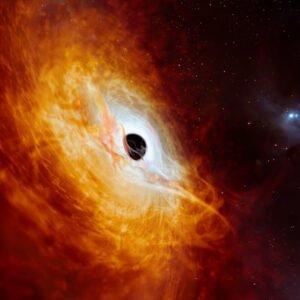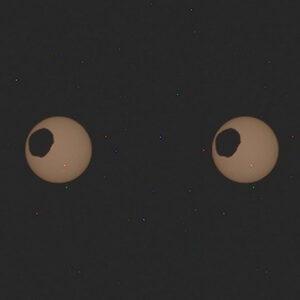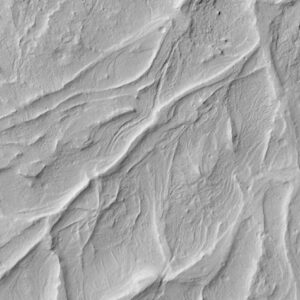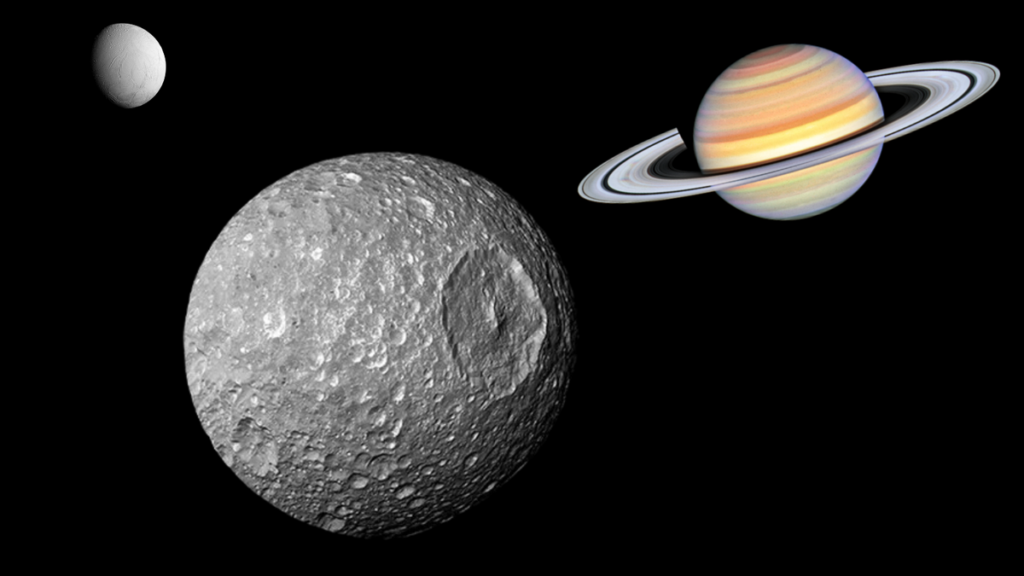
For a decade, scientists have been captivated by the notion that Saturn’s moon Enceladus might harbor a hidden ocean beneath its icy exterior, particularly near its northern pole. However, recent research published in Nature proposes an equally intriguing possibility: Mimas, a significantly smaller and less conspicuous moon, might also possess a subsurface ocean.
Picture Mimas as a spherical glacier akin to the size of California or Spain. Envisioning this petite snowball becomes even more challenging when you realize that nestled between 12 and 18 miles beneath its surface lies an enclosed ocean, containing slightly less water than the entire Mediterranean Sea.
These concealed oceans within icy moons represent tantalizing prospects for astrobiologists. It’s hypothesized that life on Earth originated in its shallow seas, making these cryo-geologic features on Enceladus, Europa, and potentially Mimas, significant targets for astrobiological exploration. Despite its diminutive size compared to Enceladus and Europa, Mimas presents a compelling opportunity for further investigation into the potential habitability of these celestial bodies.
“Mimas is a small body whose most distinctive feature is a crater so large that it gives the moon the appearance of the Death Star space station from the Star Wars franchise,” Matija Ćuk from the SETI Institute in California, and Alyssa Rose Rhoden from the Southwest Research Institute, had written. They both worked on the paper.
Previous studies proposed two potential compositions for Mimas: either it harbors an elongated rocky core or a vast global ocean beneath its heavily cratered surface. However, recent research conducted by Valery Lainey and her team at the Observatoire de Paris suggests that Mimas is more likely to possess an oceanic interior rather than a rocky core, based on analyses of its rotational dynamics and orbital behavior.
Lainey et al. employed meticulous measurements of Mimas’ moments of inertia, which indicate its resistance to rotational changes. By examining these inertial properties, the researchers gained insights into the moon’s gravitational field, crucial for deciphering its internal structure.
Their investigation relied on data collected by the Cassini spacecraft, a vital tool in studying Saturn and its moons. Over its extended mission, Cassini has provided invaluable information that has significantly enhanced our understanding of the Saturnian system, including Mimas and its intriguing characteristics.
Moving Backward to Step Forward
Let’s delve into a scientific illustration: Saturn and Earth exhibit a subtle but fascinating trait – they are both slightly flattened at their poles. This characteristic impacts the orbit of their moons, causing them to trace out a path akin to a flat circle. Picture holding a ball in one hand and a ring in the other; now, move the ring in a flat motion without touching the ball. This simple action mirrors the motion of moons orbiting these flattened planets.
To elaborate further, imagine the ball (representing the planet) rotating clockwise, and simultaneously, the ring (symbolizing the moon’s orbit) also moving clockwise. This synchronization illustrates how the flattening of planets influences the precession, or the gradual shifting, of moon orbits.
However, there’s a fascinating reversal when considering the shape and gravitational field of the moon itself. If the moon’s form is elongated, akin to an egg, this phenomenon flips. Despite both the planet and moon rotating clockwise, the orbital path of the moon rotates counterclockwise. This intriguing interplay showcases the complexity of gravitational interactions and the dynamic relationships between celestial bodies.
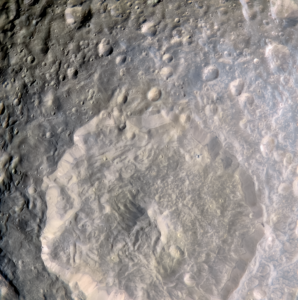
What Lainey and her team unearthed is a revelation regarding Mimas’ orbital behavior. Contrary to initial assumptions, its precession isn’t merely a consequence of external forces. Rather, the observed movements of this icy celestial body diverge from expected patterns of inertia. This incongruity led them to a groundbreaking hypothesis: Mimas’ orbit evolution is likely shaped by an internal ocean.
Their analysis indicates that this ocean resides beneath a thick icy shell, estimated to be 12 to 18 miles (20–30 km) in depth. According to simulations, this subterranean ocean likely formed anywhere from 25 to 2 million years ago. Consequently, any telltale signs of its presence, such as extensive surface fractures akin to those on Europa or the cryovolcanic eruptions witnessed on Enceladus, would not have had sufficient time to manifest.
“The idea that Mimas’ ocean could have formed relatively recently also has implications for other features of the Saturnian system that remain mysteries, in spite of clues retrieved by the Cassini mission,” Ćuk and Rhoden had also explained.
“Saturn’s bright icy rings are apparently young in geological terms, but not all scientists agree. The heavily cratered icy moons seem ancient, but the source of the bodies that made the craters is disputed, and there are suggestions that the moons themselves are also geologically young.”
“The clues provided by Mimas and its ocean could help to resolve some of these conundrums. Finally, adding Mimas to the catalogue of ocean worlds changes the general picture of what these moons can look like. The idea that relatively small, icy moons can harbor young oceans is inspiring, as is the possibility that transformational processes have occurred even in the most recent history of these moons,” they also said.
The discoveries by Lainey and her team are sure to inspire a comprehensive investigation into mid-sized icy moons across the solar system, potentially numbering in the dozens. Particularly noteworthy are the mid-sized icy moons encircling Uranus, chosen as the top-priority destination for a NASA flagship mission according to the Planetary Science and Astrobiology Decadal Survey.
What are your thoughts? Please comment below and share this news!
True Activist / Report a typo
